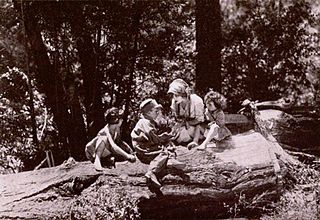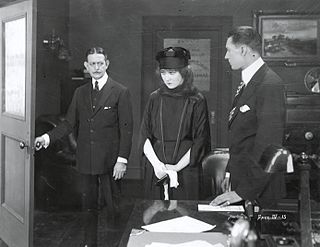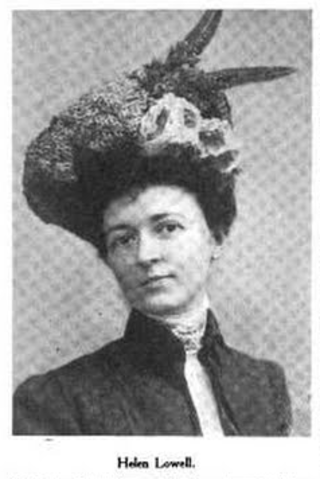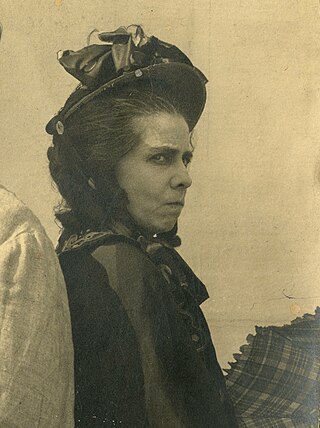
Alice Hegan Rice, also known as Alice Caldwell Hegan, was an American novelist. Her 1901 novel Mrs. Wiggs of the Cabbage Patch became a play and four films.

Barbara Britton was an American film and television actress. She is best known for her Western film roles opposite Randolph Scott, Joel McCrea, and Gene Autry and for her two-year tenure as inquisitive amateur sleuth Pam North on the television and radio series Mr. and Mrs. North.

Mabel Taliaferro was an American stage and silent-screen actress, known as "the Sweetheart of American Movies."
Jimmy Butler was an American, juvenile, motion-pictures actor, active in the 1930s and early 1940s.

Robert Strauss was an American actor. He became most familiar in Hollywood films of the 1950s such as Stalag 17 (1953), for which he was nominated for an Academy Award in the category of Best Supporting Actor.

Mrs. Wiggs of the Cabbage Patch is a 1934 American comedy drama film directed by Norman Taurog. It is based on the 1904 Broadway play by Anne Crawford Flexner, which was taken from the novel of the same name by Alice Hegan Rice. The film stars Broadway stage actress Pauline Lord, ZaSu Pitts and W. C. Fields.

Ethel Griffies was a British actress. She is remembered for portraying the ornithologist Mrs. Bundy in Alfred Hitchcock's classic The Birds (1963). She appeared in stage roles in her native England and in the United States, and had featured roles in around 100 motion pictures. Griffies was one of the oldest working actors in the English-speaking theatre at the time of her death at 97 years old. She acted alongside such stars as May Whitty, Ellen Terry, and Anna Neagle.

Salomy Jane is a 1914 silent Western drama film based on Bret Harte's 1898 novella "Salomy Jane's Kiss" and Paul Armstrong's 1907 play based on Harte's story, Salomy Jane.

Lovey Mary is a 1926 American comedy-drama film directed by King Baggot, with Bessie Love in the title role. It is based on the 1903 novel of the same name by Alice Hegan Rice, a sequel to Rice's Mrs. Wiggs of the Cabbage Patch. It was distributed by Metro-Goldwyn-Mayer.

Anne Crawford Flexner born Anne Laziere Crawford, was an American playwright.

Mrs. Wiggs of the Cabbage Patch is a 1919 silent American comedy-drama film produced by Famous Players–Lasky Corporation and distributed through Paramount Pictures. Directed by Hugh Ford, the film stars Marguerite Clark and is based on the 1904 Broadway play by Anne Crawford Flexner, which itself is taken from the novel of the same name by Alice Hegan Rice.

Mrs. Wiggs of the Cabbage Patch is a 1901 novel by American author Alice Hegan Rice, about a southern family humorously coping with poverty. It was highly popular on its release, and has been adapted to film several times. The early editions of the book carry the author's birth name, Alice Caldwell Hegan.
Mrs. Wiggs of the Cabbage Patch is a 1942 American comedy-drama film starring Fay Bainter and directed by Ralph Murphy. It was based on the play by Anne Crawford Flexner that premiered on Broadway in 1904, which was in turn adapted from the 1901 novel of the same name by Alice Hegan Rice.

Helen Lowell, born Helen Lowell Robb (1866–1937), was an American stage and film actress.

California Motion Picture Corporation was a film company based in San Rafael, California, in Marin County during the silent film era. The company lasted from 1914 until January 1916 when it went bankrupt. It was subsequently renamed and lasted until 1920. It produced at least 15 films. The film company is known for its feature-length films about early California history. Alex E. Beyfuss managed the company.

George E. Middleton was an American film director and producer. His work includes films for California Motion Picture Corporation (CMPC) and, after its failure, Beatriz Michelena Features. Middleton married stage actress and singer Beatriz Michelena, who starred in his films.

Lovey Mary is a 1903 novel by the American writer Alice Hegan Rice. The novel was first serialized in the monthly Century Magazine beginning in December 1902, then was published in book form by The Century Company on February 28, 1903. It was a sequel to the author's 1901 novel Mrs. Wiggs of the Cabbage Patch. The book contains eighteen illustrations by Florence Scovel Shinn, one of which is reproduced on the cover. The story spans three years in the life of Lovey Mary, an orphan who finds acceptance among the poor folks of the Cabbage Patch, an area which was inspired by Rice's personal experiences growing up in Kentucky.
Carmencita Johnson was an American actress. She was best known as a child actress in the 1920s and 1930s.

Mrs. Wiggs of the Cabbage Patch, is a 1903 comedy by American author Anne Crawford Flexner. It was based on two books by Alice Hegan Rice, Mrs. Wiggs of the Cabbage Patch (1901) and Lovey Mary (1903). It has three acts and two settings, all within the "Cabbage Patch", an impoverished neighborhood on the fringes of Louisville, Kentucky. The character-driven play covers three weeks time and has multiple storylines, including an ill-starred mail-order marriage, two refugees from an orphanage, the return of a long-lost husband, and a handful of young romances.

Vivia Ogden was an American film and stage actress and producer whose career spanned the 1910s and 1920s.


















